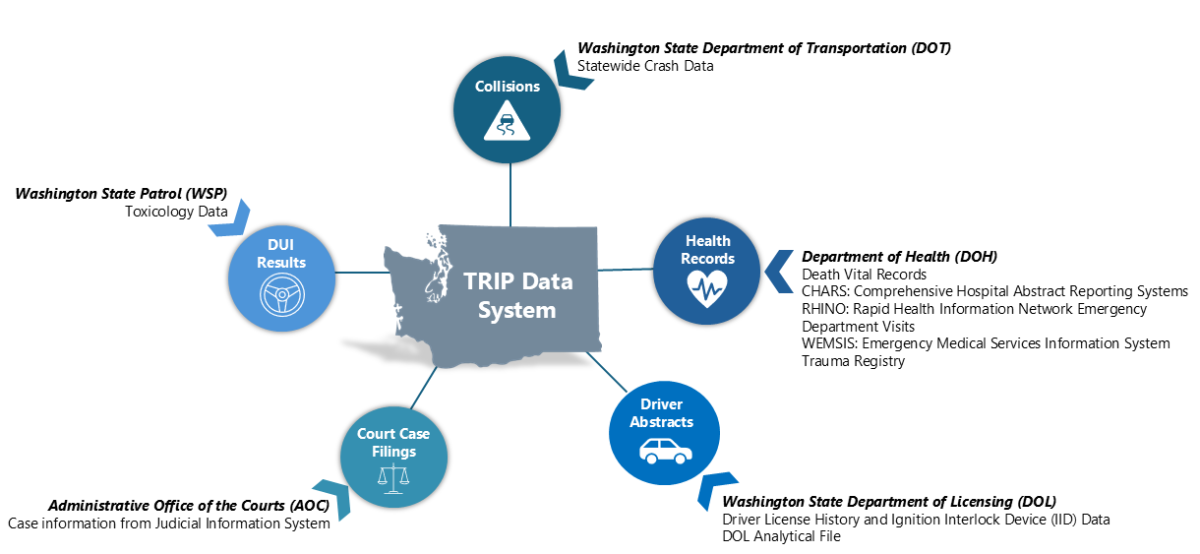Traffic Records Integration Program
The Traffic Records Integration Program (TRIP) is an effort to develop and maintain a data repository for public health and safety research to further the goals of the Vision Zero 2030 to achieve zero fatalities or serious injuries on our roads.
About the TRIP program
In 2019, the Washington Traffic Safety Commission awarded OFM’s Forecasting and Research Division with a grant to manage the Washington State Traffic Records Integration Program (TRIP).
The purpose of the TRIP is to develop and maintain an integrated data repository for public health and safety research to further the goals of Washington’s Target Zero plan to achieve zero fatalities or serious injuries on roadways in the state.

The TRIP team integrates data from Washington State Department of Transportation (WSDOT), Administrative Office of the Courts (AOC), Washington State Patrol (WSP), Department of Licensing (DOL), and Department of Health (DOH) and other sources as appropriate. This data repository enhances capacity to assess crash risk factors and the human, administrative, and financial toll from crashes on Washington roadways. By integrating different data sources, new insights into the causes and consequences of collisions might be identified and limitations of individual datasets might be overcome.
The work TRIP does
A part of its mission is to develop, maintain, and expand the TRIP data repository. The TRIP team maintains a strict privacy program and has developed data governance and data security processes to ensure subject privacy, appropriate use and security of TRIP data. TRIP engages in a number of activities, including but not limited to:
Create custom data products
Conduct cross-sector research
Support data collections
By leveraging cross-sector data and collaboration, the TRIP team supports the development of proactive safety measures. With access to high-quality, integrated data, researchers and policymakers can identify patterns and emerging risks, allowing for timely interventions such as road design modifications, enhanced traffic law enforcement, and public awareness campaigns. These preventative strategies will not only save lives but also contribute to a safer and healthier transportation system for all Washington residents.
